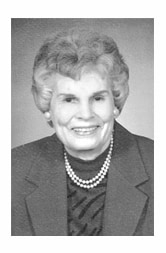When Morrow County Schools were delayed by two hours last week because of the sub zero temperature, my thoughts turned to those early days when students attended one room schools.
My mother attended Goose Heaven School, a mile north of her home on Gooseheaven Road- today’s County Road 169, and she would often share that she and her neighbor walked to the school in rain, sleet and snow.
There is a multitude of information on those early one room schools in Morrow County, from the 1880 Morrow County History, the 1988 Family History publication and more recently a book authored by Charles Mosher titled “The Silent Bell.”
Settlers in those early communities constructed crude log buildings with tar paper over window openings. Rough hewn benches served as the desks. Students’ families were required to pay a subscritption ranging from 50 to 75 cents a month per scholar. They were determined to give their children an education.
Mosher’s book describes the 188 one room schools, their locations, teachers, etc. that dotted the Morrow County landscape. These schools were used to instruct grades one through eight.
Teachers, male or female, usually roomed with a family in the area and were required to arrive early, around 4:30 a.m., to build a fire in the pot belly stove, make sure the bucket had water for drinking and other chores to prepare for the students. Every building had a tower, which housed a bell that would toll the opening of school.
Teachers were also required to meet with the parents of the students at various times during the school year. In a published interview with Bernice Peoples Imhoff, now deceased, she relayed that she attended a one room school, Pleasant Grove and later taught at that school and in the Mt. Gilead School District. Teachers at the time were trained at what was described as a Normal School.
Bernice and Charles described the interior of the school room has having a polished teacher’s desk, a long recitation bench, a black board and one or two student desks. The room included a book shelf where coats could be hung, lunch boxes placed and a dipper hung which all shared to dip their drinking water from a common container.
The outhouses were outside, the girls’ on the left side of the lot in back of the school and the boys’ on the right. Students played baseball, Any Over, Fox and Geese, etc., as well as learned the basics, reading, writing and arithmetic. Because they were all in the same room, students were exposed to a multitude of subjects from every grad level. Lessons were written on slates.
In many cases, students, after completing the eighth grade, either quit or continued high school education in a nearby village school. I am thankful for those early teachers who endured some hardships while pursuing a career that they loved.
I am also thankful for our teachers and school system today, which includes buses to transport our students and communication designed to keep our students safe during severe weather.
That one room school my mother attended was later moved a bit south and the farm owner used it as his sheep barn. My mother would look at it as we passed that farm and say “That was my school.”
I know she carried many memories of those days in the one room school memories perpetuated in books such as that penned by Mosher.
His book, available at county libraries, is full of names of students and teachers whose goal was an education.
There were several one room schools in each of the county’s townships. “The Silent Bell,” sadly reflects an era that will never return but because of the efforts of those teachers and students, we have an excellent educational system today.






